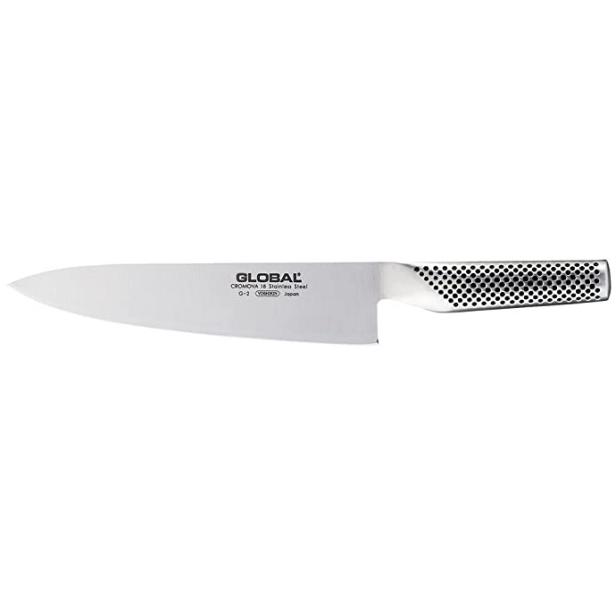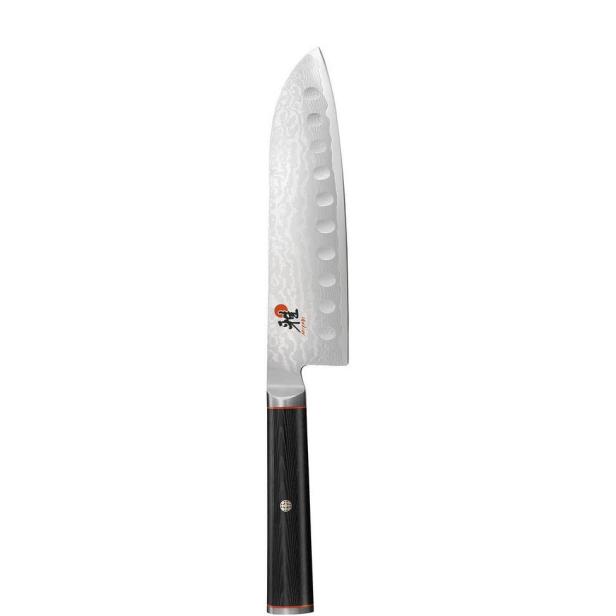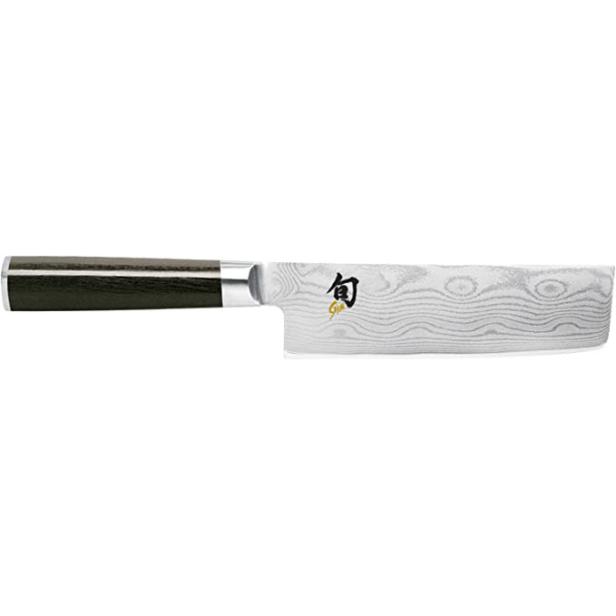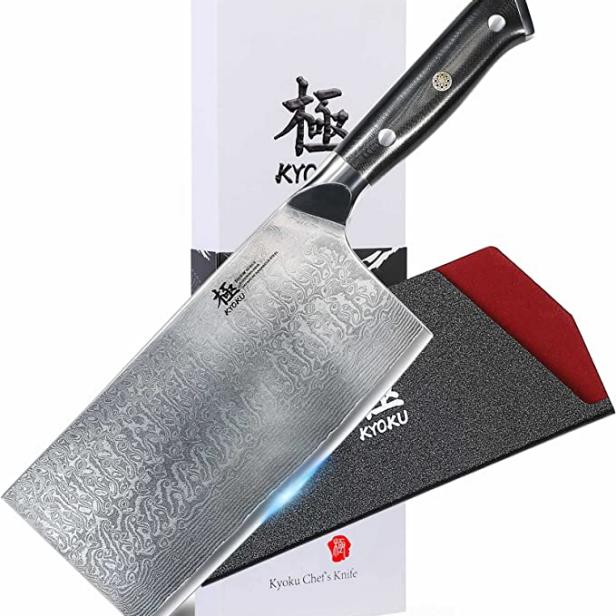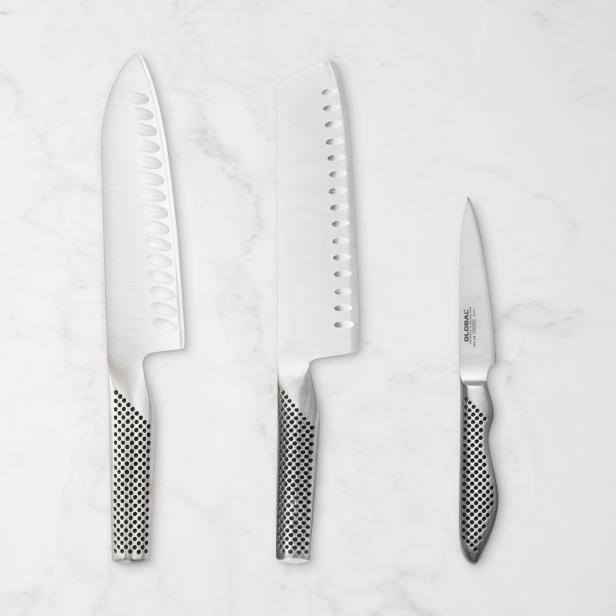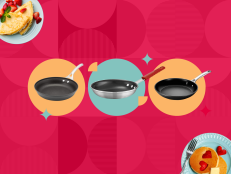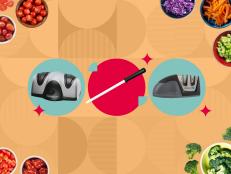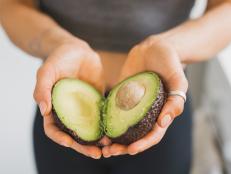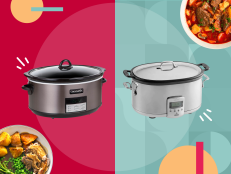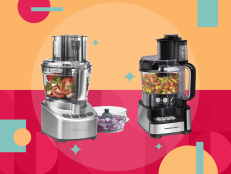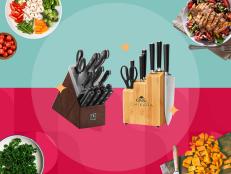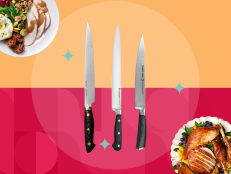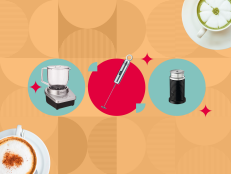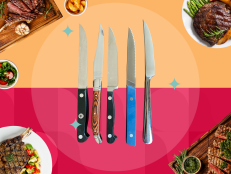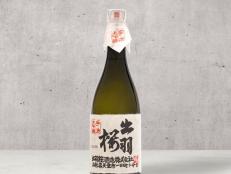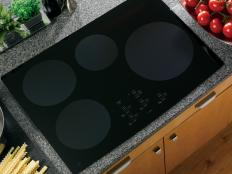5 Best Japanese Knives of 2024, According to Experts
Comfortable to hold and super sharp, these are the best Japanese knives for all your cooking tasks.

Our Top Japanese Knife Picks
- Best Chef’s Knife: Global 8-Inch Chef’s Knife
- Best Santoku: Miyabi Kaizen 7-Inch, Hollow Edge Santoku Knife
- Best Nakiri: Shun Classic Nakiri
- Best Cleaver: Kyoku Cleaver Knife (Shogun Series)
- Best Japanese Knife Set: Global Classic Vegetable Ultimate Knives
By Sharon Franke for Food Network Kitchen
Japanese knives continue to become increasingly popular among chefs in the Western hemisphere. The two most commonly used Japanese knives by American chefs and cooks are a santoku or a nakiri. These knives are renowned for their light weight and comfortable grip and how neatly they can cut everything from a slim green onion to a hunk of cheese. If you’re interested in investing in a Japanese knife for your home kitchen, here are our top picks for the most popular styles and even a knife set.
First, What Is a Japanese Knife?
True Japanese cutlery is made in Japan. However today, many American and European companies make knives in the Japanese style or with Japanese shapes. In Japan, knives are made to cut foods commonly found in Japanese cuisine, which includes lots of fish and vegetables cut thinly.
You’ll notice immediately that Japanese knives are lighter in weight than Western knives, which makes them less tiresome to hold. They’re also made of harder steel, so they can be sharpened to a thinner, straighter, and incredibly sharp edge, giving them the ability to cut very precisely. However, it’s also easier to bend or damage the blades; they need to be handled carefully and used as intended (not for hacking through bones or hard winter squashes).
Traditional Japanese knives are only sharpened on one side, which helps them to make exceptionally clean slices. For this reason, they come in right- and left-handed versions; the cutting edge is on the right-hand side of the blade for righties and left-hand side of the blade for lefties. Single-edged knives are particularly prized by sushi chefs who want to make one long even cut that will do as little damage to fresh fish as possible.
Who Needs a Japanese Knife?
Unless they’re serious about making sushi at home, most cooks don’t need one-sided knives designed for slicing fish. However, many cooks will appreciate the lighter feel and sharp edge that Japanese knives offer. While some of the traditional Japanese shapes are useful for specific home cooking tasks, a Japanese knife that’s a similar shape to a Western chef’s knife, known as a gyutoh in Japanese, is a great all-purpose tool for just about anyone.
What To Consider Before Buying a Japanese Knife
How a Knife Feels As with any knife, it’s important to pick up a knife, see how it feels in your hand, and replicate the act of using it. The knife should be comfortable to hold and offer a secure, not slippery, grip. You want the knife to be well balanced which means neither the blade nor handle feels heavier than the other; that allows you to control the blade by grasping the handle.
What a Knife’s Made of Today, most Japanese knives are made of stainless steel. However, some are still made of carbon steel and although they’re easy to sharpen and maintain their edge longer, they discolor and can even rust if they’re not cleaned and dried thoroughly immediately after you use them. We recommend buying stainless steel knives.
How to Keep it Sharp In order to keep your Japanese knives sharp, you’ll need a sharpener that can hone them to a 15-degree angle. We like the two models we’ve recommended below because in addition to excelling at creating a smooth edge on a blade, they’re easy to use and can keep all of the knives in your kitchen sharp.
Common Styles of Japanese Knives
Western Style Chef’s Knife
In Japan, this shape is called gyutoh, which translates to cow sword. While it was traditionally used by Japanese butchers to cut up big pieces of beef, it’s heftier weight and wide, curved, pointy blade make it good for everything from mincing herbs to carving a roast.
While it has the shape of a traditional chef’s knife, the Global is lighter and has the thinner, sharper blade, which Japanese knives are known. It’s manufactured in Japan of a steel formulation that can hold an edge for a long time before it needs to be resharpened. The handle and blade are made of one seamless piece of stainless steel, so it’s comfortable to pinch grip at the back of the handle. The construction also eliminates grooves which can collect debris, making the knife easy to keep clean. Small dimples on the handle offer a secure grip.
Santoku
Santoku literally means "three virtues" and is considered a three-purpose knife; some sources say it can slice meat, vegetables and fish, others say it can chop, slice, and dice. With its long wide blade, it can do almost everything a chef’s knife can do. However, as it doesn’t have a pointed tip, it can’t be used to work around bones or score garlic cloves before dicing them. And because it has a straight blade, it can’t be rocked back and forth when you’re mincing parsley. Many santokus have hollows along the edge on both sides to prevent food from sticking to the blade.
This Japanese-made santoku feels perfectly balanced in your hand. It’s also gorgeous to look at. On the blade there’s a beautiful pattern called Damascus that’s created by folding 65 layers of steel around a solid core. This gives the blade a very smooth finish that, along with indentations in the edge, helps release items like starchy potatoes or sticky scallops.
Nakiri
With its straight blade, edge, and spine, the nakiri is used in a down-and-up motion, so it cuts cleanly, creating very thin, even pieces. It’s designed for cutting vegetables into uniform slices or cubes that don’t stick together.
Cleaver
A Japanese cleaver is useful for cutting a chicken or a rack of spareribs into servings, but isn’t intended for hacking through large bones. Many Asian cooks use it the way they would a nakiri for slicing through vegetables or cutting julienne strips of daikon radish or ginger. Using the flat side, you can smash garlic or whack veal or chicken slices into cutlets.
Japanese Knife Set
If you're interested in owning more than one shape or style of Japanese knives, a set can be a more affordable option for your needs.
This is one of the few Japanese knife sets that contains more than one Japanese shape. It includes both a santoku and a nakiri, as well as a small paring knife. All of them have the textured handles and seamless stainless-steel construction that make Global knives a pleasure to use and take care of. On both the santoku and nakiri, there are hollows to help food fall off the blade as it’s cut. As the edge of the santoku is slightly rounded and the tip has a slight point, it can easily substitute for a chef’s knife.
How We Picked
Both in our test and home kitchens, we use a rotating assortment of knives. Our writer has an extensive history of testing cutlery. All of this makes us supremely qualified to determine which Japanese knives are the best ones for you to use in your own kitchens. As we always do, we also checked what other professional testers say and user comments on shopping sites.
Sharon Franke has been testing and writing about kitchen equipment for over 30 years. Before becoming a cooking tools expert, she spent seven years working as a professional chef in New York City restaurants. In her free time, she's busy baking sourdough bread and rustling pots and pans on her own stove.























